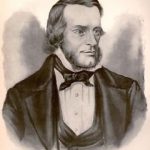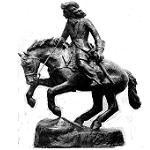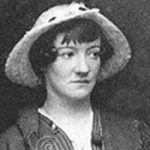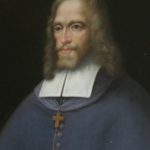The Boyne Valley, some 20 miles northwest of Dublin in County Meath, is one of the most remarkable sites on earth, for there stands three monuments to the early settlers of Ireland, and their civilization. At first they appear to be huge mounds or hills, but closer investigation reveals them to be man-made structures. They are, in fact, more than 5000 years old and the oldest, still-standing, man-made structures on the planet. They are known as Newgrange, Knowth and Dowth and celestial manifestations occur there each December. The ancients who built the mounds called them Brú na Bóinne. The … [Read more...] about THREE ANCIENT OBSERVATORIES
Historical Happenings
THE IRISH BRIGADE COMES HOME
Prior to the American Civil War, the regular Army was small reflecting the logic that America was best defended by hundreds of volunteer militia units. Many were little more than glorified fraternal organizations, filled with men who liked to parade, drink, and sometimes drill. New York had the Continental Guards, German Black Sharp-shooters and Hungarian Kossuth Rifles among others. Not to be outdone, the Irish formed the O'Connell Guards, Irish Rifles and Irish Zouaves. The more serious of these units were mustered into a formal state militia. On October 12, 1851, the 69th New York State … [Read more...] about THE IRISH BRIGADE COMES HOME
THOMAS DAVIS
There are few events in Irish history as tragic as the death of Thomas Osborne Davis. He was a rare man whose impact on the history of Ireland has never been truly appreciated. Born in Mallow, Co Cork on Oct 14, 1814, the son of a British Army Surgeon, he was educated at Trinity College and called to the Bar in 1838, but Davis heard another call: the call of Ireland. He heard it in the voice of Dan O'Connell when the Great Emancipator visited his home town in 1842, and asked a crowd of 400,000, “Where is the coward who would not die for Ireland?” This was a fiery young O'Connell, not the … [Read more...] about THOMAS DAVIS
THE GALLOPING HOGAN
After Cromwell’s conquest of Ireland, more than 40,000 Irish were relocated west beyond the Shannon by the end of 1654. Those who didn’t were press-ganged into the British Navy, or sold as indentured servants to the colonies. There was one group however, who refused to relocate. They eluded capture in the hills and glens near their ancestral homes, and raided the new settlers on the lands of their clans. They led an outlaw existence, and the British called them highwaymen; the Irish called them Rapparees. They were a constant concern to the English as they continued to strike the new owners of … [Read more...] about THE GALLOPING HOGAN
Hibernian Rifles in Ireland
As the American Irish and their Irish-American sons and daughters coalesced into a wage-earning community of Diaporadoes, organizations like the Ancient Order of Hibernians were formed in 1836 from early Ribbon societies to defend Catholic values. They also nursed a dream of an independent Ireland and maintained links with their Ribbon mentors. In the 1850s, several Ribbon groups in Ireland adopted the AOH name and, facing extreme anti-Catholic bias, fought fire with fire and became anti-Protestant to such a degree that they were called a green version of the Orange Order. While still … [Read more...] about Hibernian Rifles in Ireland
JEREMIAH O’DONOVAN ROSSA
100 years ago, on June 29, an Irish hero died who has the unique position in history to be remembered by more people for what was said at his grave than for what he did in life. It should be otherwise for he was a key part of Irish independence. Further, what was said at his grave was inspired by his life and can be considered his final act of rebellion because as a result, enrollment in the Irish Volunteers soared. But, who was this man that he could inspire such action – even from the grave? His name was Jeremiah O’Donovan and he was born on September 10, 1831 in Co. Cork, to a tenant … [Read more...] about JEREMIAH O’DONOVAN ROSSA
BRIAN BORU
A centenary is a 100-year anniversary and next year we will commemorate the Centenary of the Easter Rising. However, last year Ireland commemorated a millenium, or a thousand year anniversary, of the battle of Clontarf in which the power of the Vikings in Ireland was forever broken – the only country to ever do so. Wherever Vikings settled, they took control, but when they tried to control Ireland they failed. For two centuries they attacked towns and monasteries, making quick raids and plundering wherever and whenever they could. Their failure came at the hands of Brian mac Kennedy in … [Read more...] about BRIAN BORU
CUMANN na mBAN
On Saturday, April 29, 1916, after leaving the burning GPO for their substitute Moore Street HQ, Pádraic Pearse said that, when the history of this fight would be written, the foremost page in the annals should be given to the women of Dublin who had taken their place in the fight for the establishment of the republic. He also told the women that their presence had inspired the men whose heroism, wonderful though it was, paled before the devotion and duty of the women of Cumann na mBan and he prayed that God would give them the strength to carry on the fight. Just who were these Irish … [Read more...] about CUMANN na mBAN
GRACE
One of Ireland’s most tragic daughters, Grace Evelyn Gifford, was born on March 4, 1888, the second youngest of 12 children of a Catholic father and a Protestant mother in Rathmines, Dublin. As was then the practice, the boys were brought up Catholic and the girls as Protestants. Grace went to school in Dublin and later studied under Irish artist William Orpen who regarded her as most gifted. In 1907 she attended a Fine Art School in London and returned to Dublin in 1908 to work as a caricaturist, publishing cartoons in several magazines. She earned little money, but enjoyed a lively … [Read more...] about GRACE
THE COUNTESS OF IRISH FREEDOM
She was called the Countess of Irish Freedom by playwright Sean O’Casey and though she was born with a silver spoon in her mouth, she spat it out and risked her life for the common people of Ireland that she loved so much. Constance Gore-Booth was born into a well-to-do Anglo-Irish family on Feb. 4, 1868 in London. Her father had a large estate in Co. Sligo where she moved in the circles of the Protestant Ascendancy growing up as a noted horsewoman and a crack shot as well as a beautiful young woman. Yet, she couldn’t help comparing her life to the lives of the poor dispossessed Irish … [Read more...] about THE COUNTESS OF IRISH FREEDOM
A January Remembrance
A joint meeting of all the Wolfe Tone Societies took place in Derry in August 1966 in which it was proposed that a non-partisan civil rights campaign be started to influence cultural and political trends in the country and by using democratic means, weaken the bigoted Unionist government of Northern Ireland. IRA Chief of Staff Cathal Goulding was present and pledged support. The IRA had ceased military operations four years earlier after the failure of its Border Campaign and felt that it was now time to try political opposition. Perhaps a campaign of civil disturbance could unseat … [Read more...] about A January Remembrance
LIGHTS FROM THE PAST
There are more than just Christmas lights illuminating the darkness as the sun rises on the Winter Solstice in Ireland. On December 21, a marvelous event occurs at Bru na Boinne. On a hill in the Boyne Valley of Co. Meath stands a complex of three monuments to the early settlers of Ireland, and their civilization: Knowth, Dowth and Newgrange. Built more than 5000 years ago, they are among the oldest man-made, still-standing structures on the planet. Newgrange, in particular, is surrounded by enormous standing stones. A magnificently carved kerbstone lies before the entrance to its 65-foot … [Read more...] about LIGHTS FROM THE PAST
Saint Oliver Plunkett
On November 1, 1625, Oliver Plunkett was born at Loughcrew, Co. Meath into an influential Anglo-Norman Catholic family with connections to the Earls of Finglas and Roscommon, Lord Dunsany and Lord Louth. Until his 16th year, his education was entrusted to his cousin Patrick Plunkett, Abbot of St Mary's, Dublin and brother of Luke Plunkett who became Bishop of Ardagh and of Meath, so it is not surprising that young Oliver developed a vocation to the priesthood. When he was 16, he was sent to Rome to continue his studies. After studying at the Irish College in Rome, Oliver was ordained in … [Read more...] about Saint Oliver Plunkett
A CENTURY AGO – 1914
One hundred years ago, in the Ireland of 1914, many pacifists adhered to the legacy of Daniel O’Connell’s and Charles S. Parnell’s non-violent course and put their hopes in Home Rule and John Redmond’s Irish Parliamentary Party (IPP) as an answer to equal rights for the native Irish. Unfortunately, Home Rule meant different things to different people. O’Connell had seen a domestic Parliament for Ireland under the Crown while Young Ireland and the Fenians saw Home Rule as total separation from Great Britain. Parnell sought a Parliament in Dublin through constitutional means with limited … [Read more...] about A CENTURY AGO – 1914
To Commemorate Or Not To Commemorate
One hundred years ago was a great time to be in Ireland to paraphrase Thomas J. Clarke who had been sent by Clan na Gael leader John Devoy to revitalize the dormant IRB. Clarke was, of course, talking about rising nationalist sentiment across Ireland and the growth of the Irish Volunteers as an army of his dream of a new Irish Republic! We are currently in a decade-long period from 2013 to 2023 when the centenary of many of the events along the road to that Republic should be commemorated. Beginning with the Great Dublin Lockout of 1913 which established the Irish Citizen Army to 1923 when … [Read more...] about To Commemorate Or Not To Commemorate
Jim Sullivan
August 7, 1916 is significant in Irish history because it marks the premiere of Ireland’s first motion picture O’Neil of the Glen. It also led to another link between Ireland and America. There are so many Irish-American patriots who deserve to be remembered for the contributions they made for the sake of Ireland, yet their names have faded. One Irish-American was really an American Irishman, for even though he was raised in America, he was born in Kerry. His name was James Mark Sullivan and his family had been members of the Young Ireland Movement and editors of its newsletter, The Nation, … [Read more...] about Jim Sullivan
From Dublin Drunk to Servant of God
In June the world celebrates Bloomsday, a day in the life of James Joyce’s fictional character - Leopold Bloom, as he walks the back streets of Dublin. Some seem to know why, but most do it for the craic (merriment) - an exercise in self indulgence. Incredible as it may seem, in 1856, a man was born into those very same dirty Dublin streets who deserves more to be honored and revered than all the characters in Joyce’s book; more than even Joyce himself. His name was Matthew Talbot. One of 12 children he was reared in absolute poverty in north central Dublin at a time when there were no social … [Read more...] about From Dublin Drunk to Servant of God
Brian Boru
A thousand years ago, April 23 was an important date – it was Good Friday, a date significant to Christians everywhere. However, in Ireland it had another significance. It was the day that the forces of High King Brian Boru met the Vikings on the field of Clontarf and broke Viking power in Ireland forever – the only country ever to do so. It really all began about the year 941, when Brian was born to Kennedy MacLorcain, Chieftain of the Dalcassian clan in County Clare. He was born near present day Killaloe on the River Shannon. As the youngest son, he was destined to become a monk as his … [Read more...] about Brian Boru
Irish Harpers
Many don’t know that the national symbol of Ireland is the harp, not the shamrock! Ancient Irish harpers were professionals of the highest order. Because their status was one of great honor, their training was long and rigorous. It generally began before the age of 10, and the student had to become the absolute master of three forms of Irish music, the history of the instrument, its maintenance, and all of the scales and arpeggios related to it. It’s no wonder then, that the excellence of Irish harpers was recognized world wide. Dante praised them with rare admiration, as did Francis … [Read more...] about Irish Harpers
The Fighting Doctor
The month was February in 1861 and the place was Fort Buchanan – a military installation near Apache Pass in the southeastern Arizona territory. At the time, tension was high between the American military and the Chokonen band of Chiricahua Apaches led by a young chief named Cochise. An unrelated Coyotero Apache raiding party had stolen cattle and kidnapped the 12-year old son of a local rancher named John Ward. Ward blamed Cochise and demanded action by the local U.S. Army at nearby Fort Buchanan. Lt. Col. Morrison ordered an inexperienced young Second Lt George N. Bascom, 7th U.S. … [Read more...] about The Fighting Doctor





